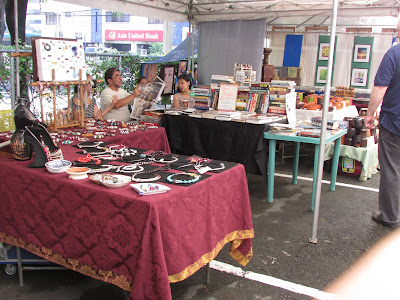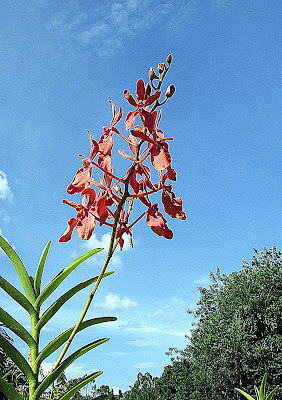A memorable journey
By AV Latinggam
 |
| Kampung Sonsogon Magandai Kota Marudu |
Kampung
Sonsogon Magandai is sited 30 kilometres away from Kota Marudu Township. It is
a remote village that is made more remote by the road condition to that place. It
not too far considering kilometres, but the road situation makes it feel like
one is travelling so far and long into the village. Beauty in nature
surrounding it may be a plus for visitors, but for the people there the road condition is
their grief and their grievance.
For
those who are driving and their passengers, they will be rolled, rattled and
trundled through rough terrain. The road is really bad, its screams ‘bad’.
On
a recent journey there on an assignment, a group of people and I were
stuck in mud seven times and had to be dug up and pulled by an accompanying
truck; raced through 15 very deep muddy patch of road, slide down muddy road
and zigzagged crazily up and down the
muddy path. As if that’s not enough we crossed a river! We travelled five hours
to reach the village and another four out.
No
wonder the villagers are grumbling.
Village
headman Majan Sampun, 69, says he and his fellow villagers have longed for a
good road for a long time.
 |
| Beauty in the forest |
“And
then the road was left unattended for years. The log bridge over the river
broke and then we cannot walk across anymore. We waded through the river on a
shallow part. If we had lifts from four wheel drives, we may be able to cross
over in comfort.”
“After
that we will walk until we get too tired and then we will rest. We usually make
it to town in two days if we walked. If we are lucky we can get lifts and get
there in a day.”
He
shares that he did not mind walking if he really had to, but not everyone
wanted to do that.
“The
sick cannot make it to town, the vehicle bumping and trundling will make them
worse. We have brought a few sick villagers on the road, some died on the way.
We had to turn back half way to town,” he shares.
According
to him, the village does receive flying doctor service every month, but at times they would not be
able to do so, especially when it’s windy and rainy.
 |
| Stuck in the mud! |
 |
| We've only just begun! |
“Sick
people can’t pick a fair-weather day to be ill. If bad weather continues for a
week, he would either be too sick to care about getting well by then or he
would be dead,” he shares.
“We
need a clinic here, with at least a nurse in attendance. There may be only 81
houses here with 312 people, but we are also entitled to basic health
facilities. I hope the relevant authorities can build us a clinic, and accord
us a nurse to attend to us. There are mothers
who need medical facilities to give birth, children sick and the elderly too,”
the father of five children shares.
On
the economy, he says they are all sustenance farmers. They plant yam and
tapioca for food, while some have paddy fields.
Others plant vegetables for their own consumption.
“It
would be good if we can market some of our goods in Kota Marudu, so we can earn
some money. We need money for our children’s schooling and for our salt and
other type of food that we cannot grow on our own.”
 |
| A Friendly Hand...Pull!! |
 |
| The River Crossing |
“If
we have a good road, we can market our wares. As it is now, if we carried our
produce on our back for 30 kilometres and with a very bad road, at that, it
will not be worth our while. By the time we reach town, our vegetable will have
been mushed and the price we acquire from our yams and tapioca will not even be
able to cover our fare back, if someone is good enough to ferry us back to the
village.”
According
to him, there are also rubber tappers among them who need access to buyers to
sell their ware.
“Therefore
I stress once again, please do something about our road. I hope that the
relevant authorities will hear our plea. Don’t allow our suffering to continue
for the next five years.”
Basil
Imal, 41, echoed Majan saying that he is very sad about the lack of clinic and
communications in the village.
He
shares that they needed more than just periodic visits by flying doctors and
government representatives.
“We
need a good road, we need electricity, we need communications facilities like
telephone and other media. We are so left behind in development. I hope the
relevant authorities will listen to us and hear our plea,” he shares.
The authority should look into this problem.



























